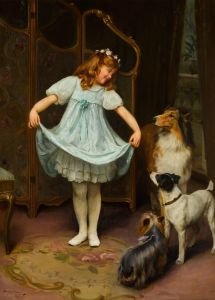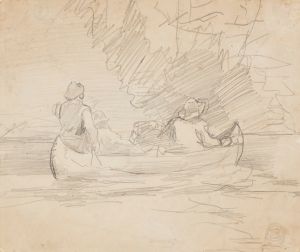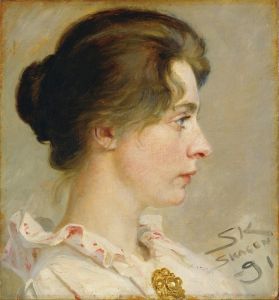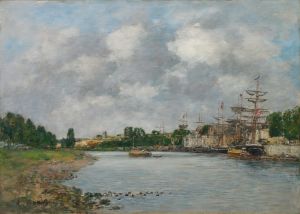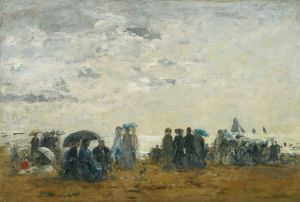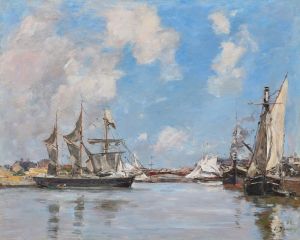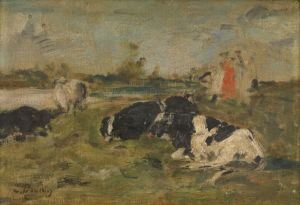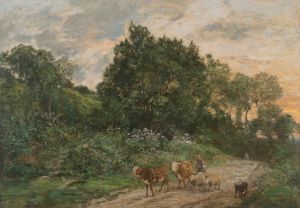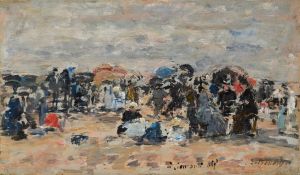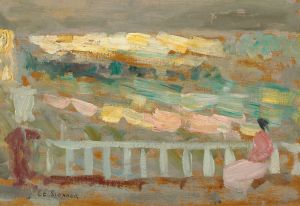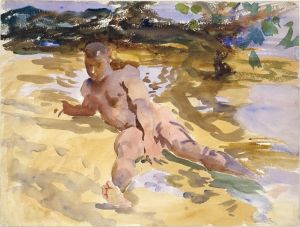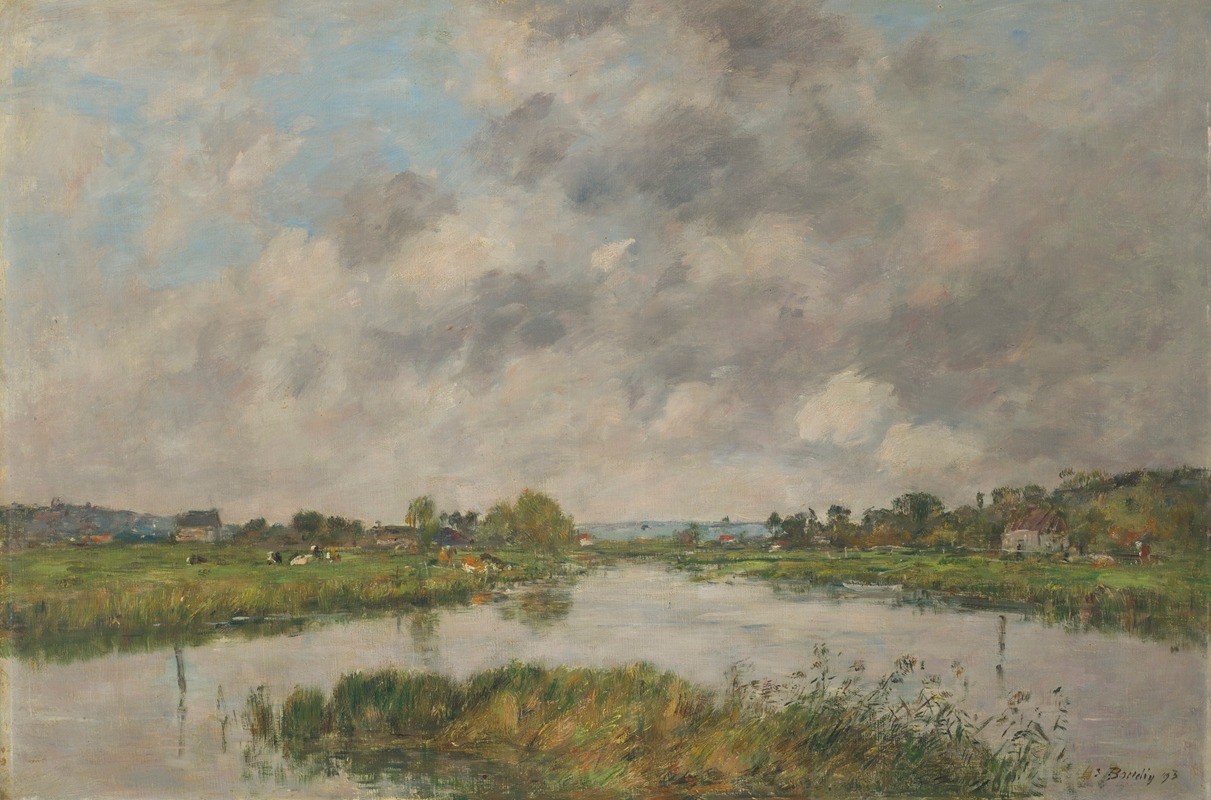
La Rivière morte à Deauville
A hand-painted replica of Eugène Boudin’s masterpiece La Rivière morte à Deauville, meticulously crafted by professional artists to capture the true essence of the original. Each piece is created with museum-quality canvas and rare mineral pigments, carefully painted by experienced artists with delicate brushstrokes and rich, layered colors to perfectly recreate the texture of the original artwork. Unlike machine-printed reproductions, this hand-painted version brings the painting to life, infused with the artist’s emotions and skill in every stroke. Whether for personal collection or home decoration, it instantly elevates the artistic atmosphere of any space.
Eugène Boudin, a prominent French painter, is celebrated for his significant contributions to the development of landscape painting in the 19th century. One of his notable works is "La Rivière morte à Deauville," which translates to "The Dead River at Deauville." This painting exemplifies Boudin's mastery in capturing the transient effects of light and atmosphere, a skill that greatly influenced the Impressionist movement.
Boudin was born in Honfleur, France, in 1824, and he spent much of his life painting the coastal regions of Normandy. He is often associated with the pre-Impressionist movement and is known for his plein air painting technique, which involves painting outdoors to capture the natural light and environment directly. This approach was relatively novel at the time and laid the groundwork for the Impressionists who followed.
"La Rivière morte à Deauville" is one of Boudin's many depictions of the Normandy coast, an area he frequently explored in his work. Deauville, a seaside resort town, was a popular destination for the French bourgeoisie in the 19th century, known for its beaches and vibrant social scene. Boudin's choice of this location reflects his interest in the interplay between nature and the leisurely activities of the upper classes.
The painting itself is characterized by Boudin's signature style, which includes a loose brushwork technique and a keen attention to the effects of light on water and sky. In "La Rivière morte à Deauville," Boudin captures a serene and contemplative scene, focusing on the tranquil waters of the river and the subtle shifts in color and light. The composition likely includes elements such as boats, reflections on the water, and the surrounding landscape, though specific details about the painting's content are not extensively documented.
Boudin's work is often noted for its atmospheric quality, and "La Rivière morte à Deauville" is no exception. His ability to convey the mood and essence of a scene through his use of color and light was highly influential to artists like Claude Monet, who once referred to Boudin as his master. Monet and other Impressionists admired Boudin's dedication to capturing the fleeting moments of nature, a principle that became central to their own artistic endeavors.
Throughout his career, Boudin remained committed to painting the natural world, and his works continue to be celebrated for their beauty and innovation. "La Rivière morte à Deauville" is a testament to his skill in rendering the subtle nuances of the environment, and it remains an important piece within his oeuvre. Boudin's paintings are housed in numerous collections around the world, including the Musée d'Orsay in Paris, which holds a significant number of his works.
In summary, Eugène Boudin's "La Rivière morte à Deauville" is a quintessential example of his ability to capture the ephemeral qualities of light and atmosphere. Through his innovative techniques and dedication to plein air painting, Boudin played a crucial role in the evolution of modern landscape painting, leaving a lasting impact on the art world.





